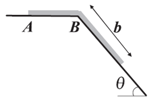Kinematic Equations for Uniformly Accelerated Motion
Kinematic Equations for Uniformly Accelerated Motion: Overview
This topic covers concepts, such as Uniformly Accelerated Motion, Sign Convention in Accelerated Motion, Equations of Motion with Constant Acceleration, and Velocity - Time Equation under Constant Acceleration.
Important Questions on Kinematic Equations for Uniformly Accelerated Motion
A ball is dropped from a high rise platform at, starting from rest. After another ball is thrown downwards from the same platform with the speed . The two balls meet at, . What is the value of ? (Take, )
Two bodies, (of mass ) and (of mass ), are dropped from heights of and , respectively. The ratio of the times taken by them to reach the ground is
Two balls are dropped from heights and respectively. What would be the ratio of times taken by the balls to reach the earth ?
A particle starts moving in +ve x-direction with an initial velocity of with a uniform acceleration of magnitude but directed in -ve x-axis. What is the distance traversed by the particle in .
The velocity of a body at the end of is , at the end of 12 s is and at the end of 22 s, it is . The body is moving with
The stopping distance of a car is when moving with a speed of . If the car is now moving with , then its stopping distance will be
A ball is thrown vertically upwards with a velocity of from the top of a multi-storey building of high. How high will the ball rise? Take .
A chain of length and of mass is placed upon a smooth surface. The length of is . Now, the chain is released and it slides down. Calculate the speed of the chain when its end reaches .

At a particular height, the velocity of an ascending body is . The velocity at the same height while the body falls freely is
A car accelerates from rest with on a straight line path and then comes to rest after applying brakes. Total distance travelled by the car is 100m in 20 second. Then the maximum velocity attained by the car is
A ball of mass m is thrown upward with a velocity v. If air exerts an average resisting force F, the velocity with which the ball returns back to the thrower is
Assertion: The displacement-time graph of a body moving with uniform acceleration is a straight line.
Reason: The displacement is proportional to time for uniformly accelerated motion.
Assertion: In a free fall, weight of a body becomes effectively zero.
Reason: Acceleration due to gravity acting on a body having free fall is zero.
A train takes 18 seconds to pass completely through a station 162 m long and 15 seconds through another station 120 m long. The length of the train is:
A train moves past a telegraph post and a bridge 264 m long in 8 seconds and 20 seconds respectively. What is the speed of the train?
A train speeds past a pole in 15 seconds and a platform 100 m long in 25 seconds. Its length is:
A train crosses a platform 100 m long in 60 seconds at a speed of 45 km / hr. The time taken by the train to cross an electric pole is:
A train covers a distance of 12 km in 10 minutes. If it takes 6 seconds to pass a telegraph post, then the length of the train is:
Two bodies are thrown simultaneously from a tower with the same initial velocity ; one vertically upwards, the other vertically downwards. The distance between the two bodies after time is___
A person sitting in an open car moving at constant velocity throws a ball vertically up into air. The ball falls
